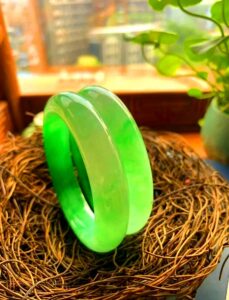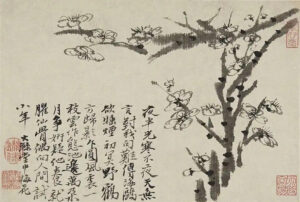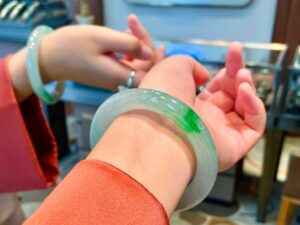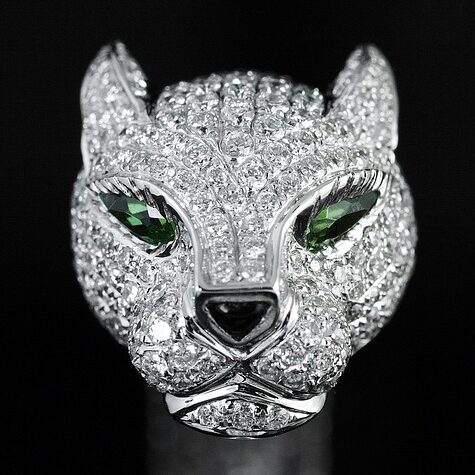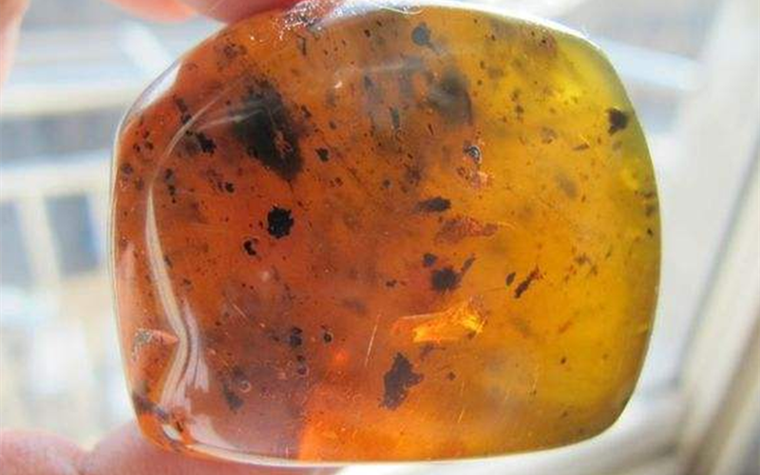
This is Not Amber: Beware of Malyshan Imitations
這不是琥珀,這叫馬麗散,警惕!
Recently, street vendors have been selling items falsely marketed as amber. Is it genuine? Let’s clarify this issue and help collectors avoid being scammed.
最近街攤上出現許多販售所謂「琥珀」的商品。這些真的是琥珀嗎?本文將進行科普解析,並請讀者提醒身邊藏家避免上當。
The material commonly used in these fakes is Malyshan (瑪麗散), a polyurethane resin used in mining to fill cracks. Industry professionals call it “large spectrum/filling glue,” with the technical term being polyamine resin. This low-viscosity, two-component polymer expands when injected under high pressure into coal seams or concrete cracks, serving as a sealant.
這種材料的學名是馬麗散,是挖礦時用來填充縫隙的膠,行內稱為「大杏譜/填充膠」,專業術語為聚亞胺膠脂。這種低黏度雙組分合成高分子在高壓注入煤岩層或混凝土裂縫後會膨脹,達到止漏目的。
In recent years, these imitation materials have flooded collectibles markets across cities, masquerading as raw amber or beeswax amber. Vendors price them at 2–15 RMB per gram, while the chemical cost is actually less than 1 RMB per kilogram. Buyers must stay vigilant.
近年來,這類仿品在各大城市文玩市場湧現,冒充琥珀或蜜蠟原石。賣家定價為每克2-15元,但其化學成本實際僅每公斤幾毛錢,大家千萬不要上當。
Identification Methods
鑑別方式
- UV Light Test: Genuine amber exhibits fluorescence under ultraviolet light, whereas Malyshan does not (though recent reports suggest scammers may be developing fluorescent versions).
紫外線測試:天然琥珀在紫外光下有熒光反應,馬麗散則無(但據傳近期已出現能仿造熒光的版本)。 - Appearance Clues: Some Malyshan samples have coal dust on the surface. While Fushun amber (撫順琥珀) also has coal-covered surfaces, it appears only in small, expensive particles. Large, light-colored “amber” with coal dust is likely fake.
外觀特徵:部分馬麗散外皮帶有煤灰。目前流通的琥珀中僅撫順琥珀帶煤皮,但撫順琥珀均為小顆粒且價格昂貴,因此出現大塊淺色帶煤皮者極易辨為假貨。 - Hardness Test: Malyshan has higher hardness and impact resistance than amber. It is less brittle and may even bounce when dropped.
硬度測試:馬麗散硬度較高,抗衝擊性比琥珀好,據說掉落地麵會彈起。
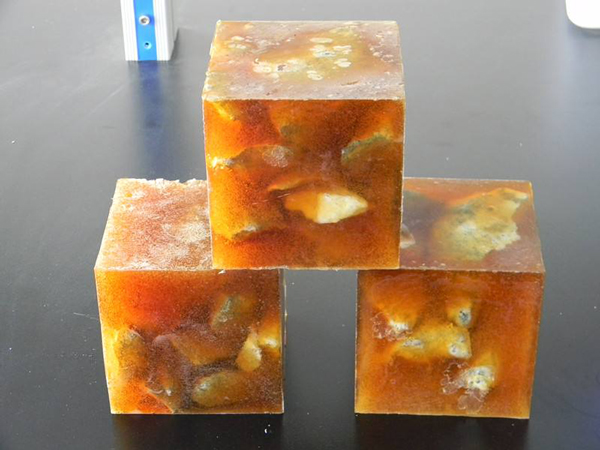
Beeswax Amber Fraud Techniques
蜜蠟造假術
Beeswax amber refers to opaque or semi-opaque amber. Its warm, jade-like texture and bright color make it highly popular. However, the collectibles market is flooded with fakes. Below are common scams:
不透明或半透明的琥珀稱為蜜蠟。其溫潤如玉的質地和亮麗色澤深受喜愛,但當前市場魚龍混雜,造假手段層出不窮。以下是常見造假類型:
1. Noble Beeswax (貴族蜜蠟)
1.貴族蜜蠟
Notorious in the amber industry, this scam has deceived countless buyers. Noble Beeswax is made from plastic and was first created in Taiwan in the 1980s. It remains a threat to uninformed consumers. Its key characteristic is unnaturally bright, multicolored patterns.
這在琥珀行業可謂臭名昭著,是最多人上當的仿品。貴族蜜蠟原材料是塑料,由台灣人於20世紀80年代首創,至今仍在危害缺乏識別能力的消費者。其特點是顏色鮮豔、花花綠綠。
2. Trade Beads (貿易珠)
2.貿易珠
These were mass-produced in Europe and the Middle East during the 17th-century colonial expansion and sold to Africa and Central Asia. They also entered China via the Silk Road, primarily in Xinjiang. Made from synthetic resin (mostly German-produced), they are now marketed as “Middle Eastern beeswax” or “African beeswax.”
貿易珠指17世紀歐洲殖民擴張時期由歐洲、中東大量生產銷往非洲、中亞等地的蜜蠟仿製品,也通過絲綢之路流入我國新疆地區。原材料為合成樹脂,主要由德國人生產。
Although trade beads are imitations, they hold cultural and historical value. Some Europeans collect them, and they can be expensive. However, in China, they are often fraudulently sold as “antique beeswax.”
雖然是仿製品,但貿易珠具有一定文化背景與歷史意義,受到部分歐洲人喜愛且價格不菲。在中國則常以「古董老蜜蠟」名義欺騙消費者。
3. Modern Plastic Imitations (現代塑料仿品)
3.現代塑料仿品
These include phenolic resin, casein plastic, celluloid, amino plastic, acrylic, and polystyrene.
塑料類仿品主要包括酚醛樹脂、酪蛋白塑料、賽璐珞、氨基塑料、有機玻璃、聚苯乙烯等材料。
- Density Test: Most plastics sink in saturated saline solution, while amber floats (except polystyrene, which has a density of 1.05 g/cm³).
密度測試:大部分塑料在飽和鹽水中下沉,琥珀則懸浮(僅聚苯乙烯因密度1.05g/cm³會懸浮)。 - Refractive Index: Plastics range from 1.50 to 1.66, rarely matching amber’s 1.54.
折射率:塑料折射率在1.50-1.66之間,很少與琥珀的1.54接近。 - Cut Test: Plastic flakes off when cut subtly; amber chips.
切割測試:塑料會成片剝落,琥珀產生小缺口。 - Hot Needle Test: Plastic emits chemical smells when heated; amber releases a pine scent.
熱針測試:塑料有異味,琥珀有松香味。
4. Bakelite Imitations (電木仿製品)
4.電木仿製品
Bakelite (phenolic plastic) was the first industrially produced plastic. Such imitations are rare and relatively easy to identify.
電木的化學名稱叫酚醛塑料,是第一個投入工業生產的塑料品種。這類仿品不多見,也不難鑑別。
5. Tibetan-style Beeswax Fakes (藏式蜜蠟仿品)
5.藏式蜜蠟仿品
These mimic traditional Tibetan amber ornaments but use artificial materials.
這類仿品模仿傳統藏式蜜蠟飾品,但採用人工材料。
6. High-End Fakes (高仿品)
6.高仿品
These highly resemble genuine amber, often produced with Russian or German technology. They require careful examination to avoid deception.
這類產品與真品極相似,多為俄羅斯或德國技術製造,需仔細鑑別以免上當。
- Fake Blood Amber: Overly red and overly clean internally; lacks natural inclusions when magnified.
假血珀特徵:顏色過於紅豔,內部過於潔淨,放大觀察無天然結構或包裹體。 - Artificially Aged Beads: Some vendors mix a few fake beads into genuine strings, making detection harder. Even sellers may be unaware.
仿老蜜蠟珠:商家可能在一串真品中摻入幾顆假珠,連賣家自身也可能不識貨。 - Heat-Treated Color: Artificially heated beads show subtle red edges or tiny red dots under magnification.
烤色特徵:邊緣微紅或放大後見小紅點。
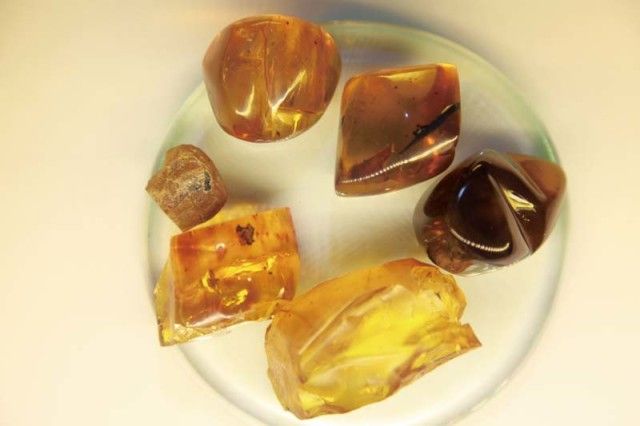
Conclusion
結語
As imitation techniques evolve, collectors must stay informed. Always verify through density tests, UV checks, and professional appraisal when in doubt. Remember: true amber carries natural imperfections and historical essence—irreplaceable by artificial copies.
隨著仿製技術進步,藏家必須保持警惕。存疑時務必進行密度測試、紫外線檢查或專業鑑定。切記:真品琥珀帶有天然瑕疵與歷史底蘊,非人工仿品所能替代。
Read More
- Jadeite Through the Seasons: A Guide to Year-Round Wear and Care
- Understanding Bronze Vessels: Types and Terminology
- Qing Dynasty Porcelain Techniques: Blue-and-White and Underglaze Red
- Metamorphosis: Chinese Sculpture Through the Dynasties
- Exploring Ding Kiln’s Diverse Charms: A Complete Guide to Appreciation

